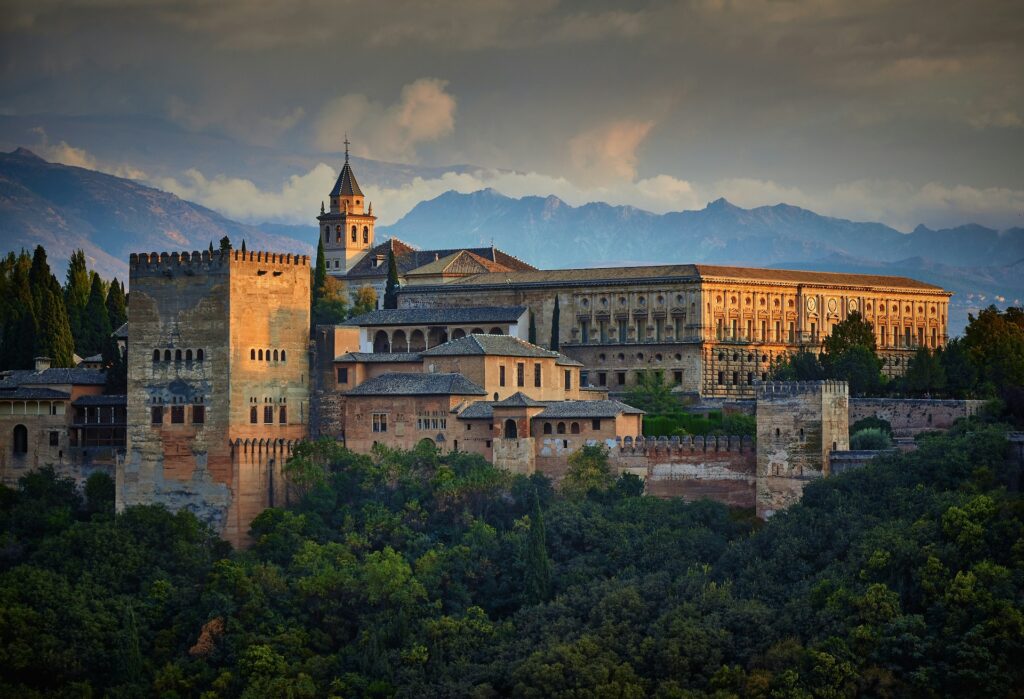We’re taking a journey through time – from Pompeii to Machu Picchu, Angkor Wat to The Acropolis to reveal the most mind-blowing facts about seven of the world’s most remarkable ancient sites.
Spanning continents and epochs, these sites offer insights into the lives and ingenuity of ancient civilizations, acting as time capsules that transport us to bygone eras.
What’s more, we’ll also let you know how you can visit them with us with these history experiences – and continue to enhance your understanding and appreciation with the help of our expert Travel Directors.
Petra: The Rose-red City of the Nabateans
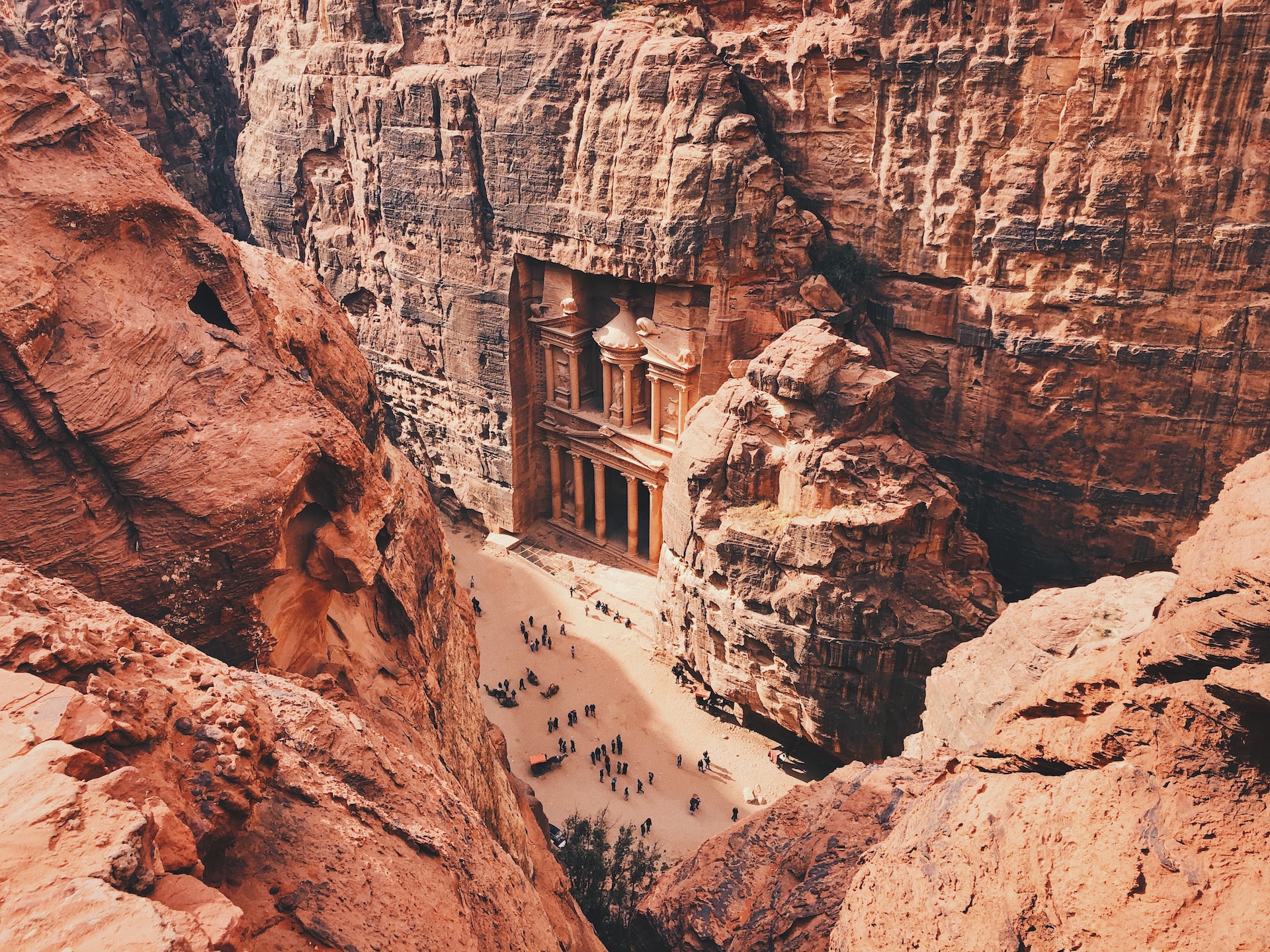
Designated a UNESCO World Heritage Site in 1985, Petra is not just one of Jordan’s most popular sites, it’s arguably one of the brightest jewels in the Middle East. Founded in around 312 BCE, the ancient city served as the capital of the Nabatean Kingdom – a prosperous trading hub linking the Arabian Peninsula, Egypt, and the Mediterranean.
It was home to a significant and diverse population of up to 20,000 inhabitants at its peak. The city’s strategic location and architectural grandeur made it a melting pot of cultures, reflected in its unique blend of Greco-Roman, Egyptian, and Nabatean architectural influences.
One of Petra’s most impressive features is its sophisticated water management system. Despite being located in an arid region, the Nabateans devised methods to harness water sources to sustain the city and its inhabitants. An intricate network of dams, channels, and cisterns was built to collect and distribute water throughout Petra, ensuring a reliable water supply for drinking, agriculture, and daily life.
A visit to Petra is one of the most unforgettable ancient history experiences you can have anywhere in the world, and with one of our expert Travel Directors on hand, you’ll know everything there is to know about it by the end of your visit.
Experience it yourself: Jordan Experience
We think you’ll also like: Cairo: the transcontinental capital of culture
Machu Picchu: The Lost City of the Incas
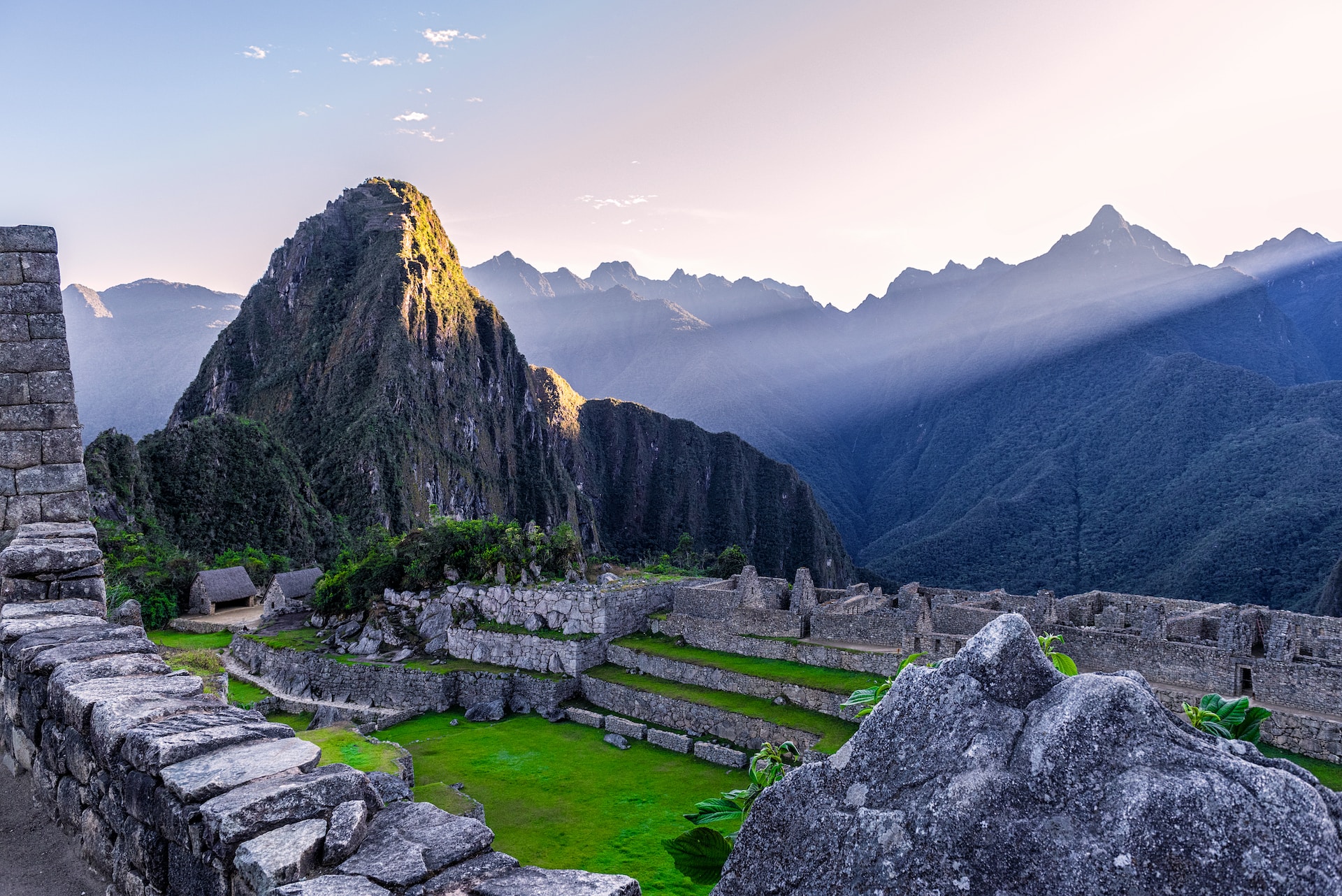
High in the Andes Mountains of Peru, Machu Picchu has been shrouded in mystery ever since it was rediscovered in the early 20th Century. Thought to have been originally constructed in the early to mid-1400s, “The Lost City” showcases the Incas’ architectural ambition, engineering ingenuity, and advanced urban planning.
Although scientists and archaeologist continue to debate the intended purpose of Machu Picchu, what everyone who’s ever stepped foot in the site can agree on is that its mere existence is close to miraculous. The Incas employed their finely-honed dry-stone technique for the construction, meaning no mortar was used to bind the stones together. It’s a testament to the precision and stability of the construction that the site has withstood the test of time, even surviving several earthquakes.
And there are subtler points to ponder, too. The levelling and stabilizing of the agricultural terraces, the drainage infrastructure ¬– and, of course, the very act of getting thousands of 50-ton granite boulders up a near-sheer mountainside.
For a history experience you’ll always remember, visit Machu Picchu with us – and gain a little more insight into the genius of the Incas.
Experience it yourself: Peru with Machu Picchu
We think you’ll also like: MAKE TRAVEL MATTER®: Why developing meaningful travel experiences has never been more important
STONE HENGE: WILTSHIRE’S MEGALITHIC MASTERPIECE
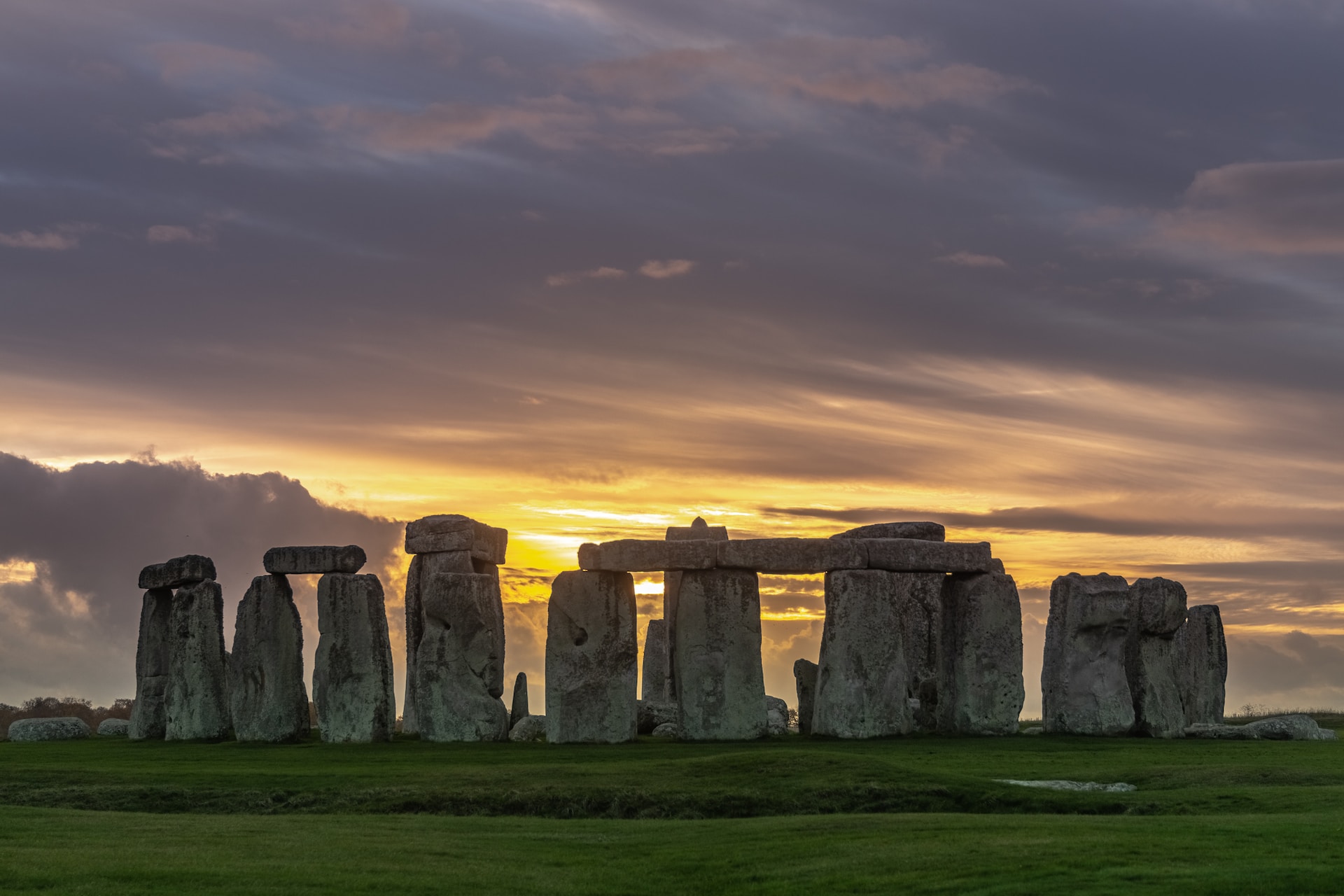
It might seem extraordinary that Stone Henge, a half-ruined, weather-worn circle of boulders erected in the middle of the windswept Salisbury Plain could attract over a million visitors a year. Certainly a significant number more than it would have done in the time its purpose was understood.
And in that is the key to its enduring appeal – the mystery surrounding its function, its construction and its fate. What we do know is that this stone circle dates to the neolithic period – and was likely constructed over a period of roughly 1,300 years, ending in 1800 BCE. We also know it has astrological significance, as it was built to be perfectly aligned for the summer and winter solstice events.
What has remained a mystery however is the method of construction – namely, how a number of these enormous stones were transported from their likely quarries, around 180 miles away in Wales’ Preseli Hills. Recent evidence that pinpoints the exact location of these quarries suggests an exclusively overland enterprise, rather than the previously long-held theory of a combination of raft and overland transport.
It’s likely that the stones were transported using wooden sledges moving over logs continuously placed in front of them. Explore these theories, and learn more about the site when you join us for an iconic history experience.
Experience it for yourself: Gems of Britain
We think you’ll also like: King of the castles: why August is the best time to visit Edinburgh
POMPEII: A CITY FROZEN IN TIME
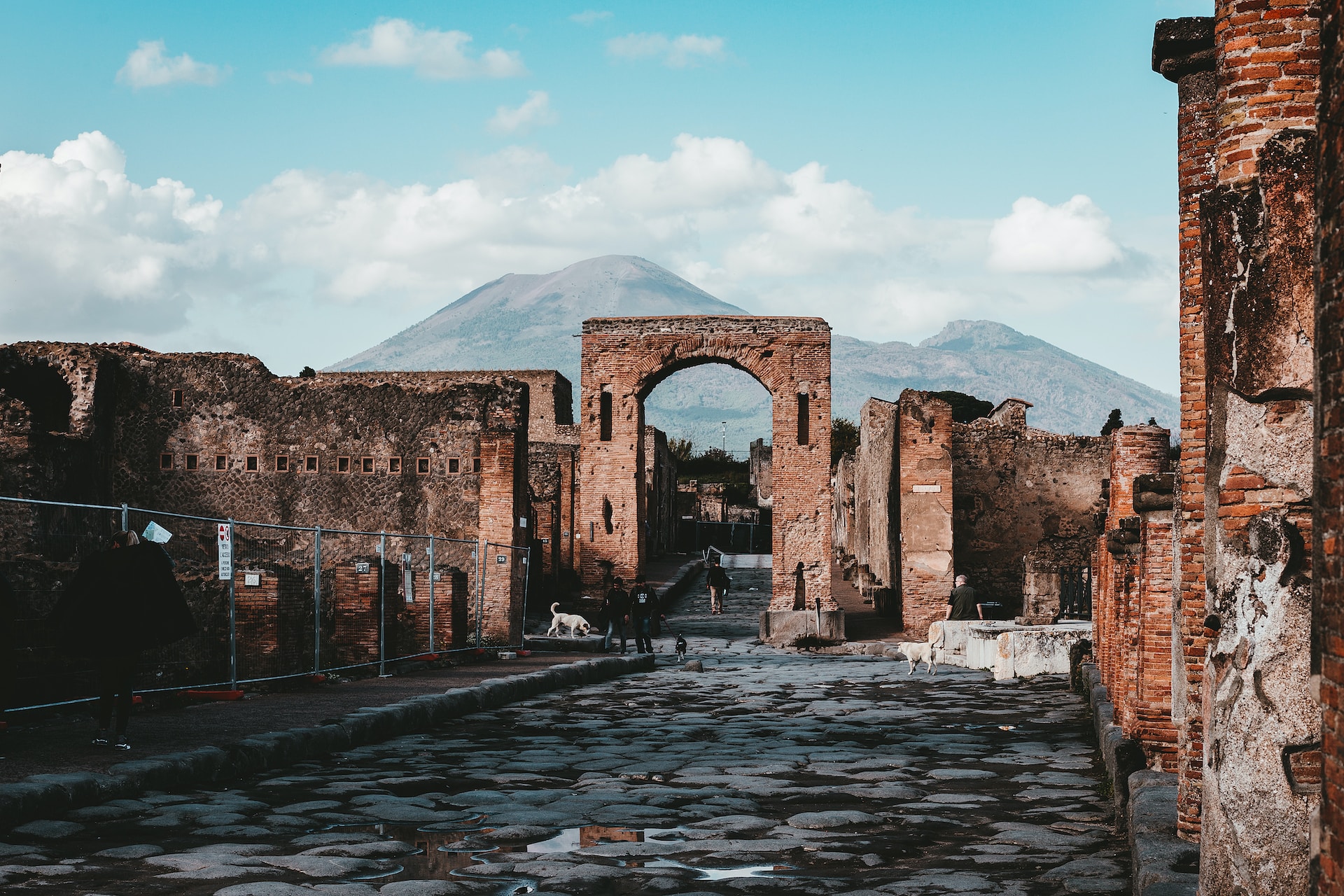
The eruption of Mount Vesuvius in 79 CE is arguably the most infamous natural disaster to occur anywhere, at any point in history. This is almost entirely because of the way it affected the Roman resort town of Pompeii, which up until the eruption was home to around 12,000 people and whose streets were lined with the villas of the empire’s most well-heeled movers and shakers.
When Vesuvius erupted, it buried Pompeii beneath a sea of superheated volcanic ash up to 19 feet deep (about the heigh of a modern two-storey house). As it compacted, the heat of the ash consumed all the oxygen, suffocating those unable to escape the pyroclastic flow, and interring their bodies – as well as almost everything else it touched – for over 1,500 years.
Pompeii was initially rediscovered in the 16th Century, but it wasn’t until the late 1800s that excavations were done in a systematic and organised way. It was lead archaeologist at the time, Giuseppe Fiorelli, who realised there were voids containing human remains left in the ash layer where bodies once lay. He devised a method of injecting the voids with plaster to create the forms of the victims. This method is still carried out today, only with a clear resin, which does not destroy the residual remains.
One of the other most fascinating discoveries in Pompeii was the graffiti found scrawled across many of the buildings’ interior and exterior walls. It was an insight into a cruder, more informal and colloquial form of Latin that was otherwise missing from formally recorded texts of the time. Essentially, this was how real people spoke. These graffiti provide a true window in the real lives of Pompeii’s residents at the time of the eruption.
Experience it for yourself: Best of Italy
Blossoming romance: why May is the best time to visit Italy
VALLEY OF THE KINGS: EGYPTIAN ROYALTY’S FINAL RESTING PLACE

On the west bank of the River Nile, opposite the modern city of Luxor (the site of the Ancient Egyptian city of Thebes), the Valley of the Kings contains (at the current count) 62 tombs belonging to Ancient Egypt’s Pharaohs, dignitaries and various other nobility. Mummies discovered here number in the hundreds.
It is perhaps most famous for the discovery of the tomb and mummy of the boy Pharaoh Tutankhamun. But what was so special about this tomb, and this Pharaoh in particular, that has made the Valley of the Kings such a draw to visitors to Egypt? It is in large part due to the story of the tomb’s discovery, but Egyptologist Howard Carter in 1922.
Carter was 5 years into what was increasingly looking like a futile search for the long-rumored final resting place of Tutankhamun. Many archaeologists were convinced his tomb had already been discovered, but Carter was convinced it was out there still. And not only was he proved correct, this tomb contained the most valuable hoard of Ancient Egyptian artifacts discovered anywhere in the Valley of the Kings.
One of the most astounding treasures is Tutankhamun’s solid gold sarcophagus, one of three coffins he was placed in, which has an empirical value of at least US$5.7 million based on today’s gold prices. But of course, it’s much more valuable than that – purely for its historical value. In fact, the current insurers of Tutankhamun’s treasures has a policy worth US$900 million that covers the items being exhibited around the world.
Experience it for yourself: Splendours of Egypt
We think you’ll also like: Secrets in the sand: the thrill of uncovering Egyptian artefacts
ANGKOR WAT: THE HEART OF THE KHMER EMPIRE

Anyone lucky enough to visit Cambodia’s Angkor Wat will undoubtedly be left with one undeniable impression – that this is display of almost unparalleled architectural and artistic skill and prowess.
The largest religious monument in the world, Angkor Wat covers an area of 402 acres – that’s about 305 football fields stitched together. But it’s not just the scale that’s impressive, but the planning that had to go into its construction, as well as the architectural details that embellish every building on the site.
Situated with an east-west orientation, it’s clear the site was built in adherence to astrological patterns. Angkor Wat temple’s main tower aligns with the sunrise of the spring equinox, and there are clear lines of sight to other towers that align with the summer and winter solstices
The statues of Hindu gods, the bas-reliefs of religious scenes, the carved sandstone towers that cap the site’s temples are what make this site so unforgettable. The richness of the artistic elements, coupled with the scale and precision of the layout make this a truly unforgettable place to visit. Visit with us, let one of our knowledgeable Travel Directors talk you through the site in greater detail – an exceptional history experience awaits.
THE ACROPOLIS: ICON OF ANCIENT GREECE
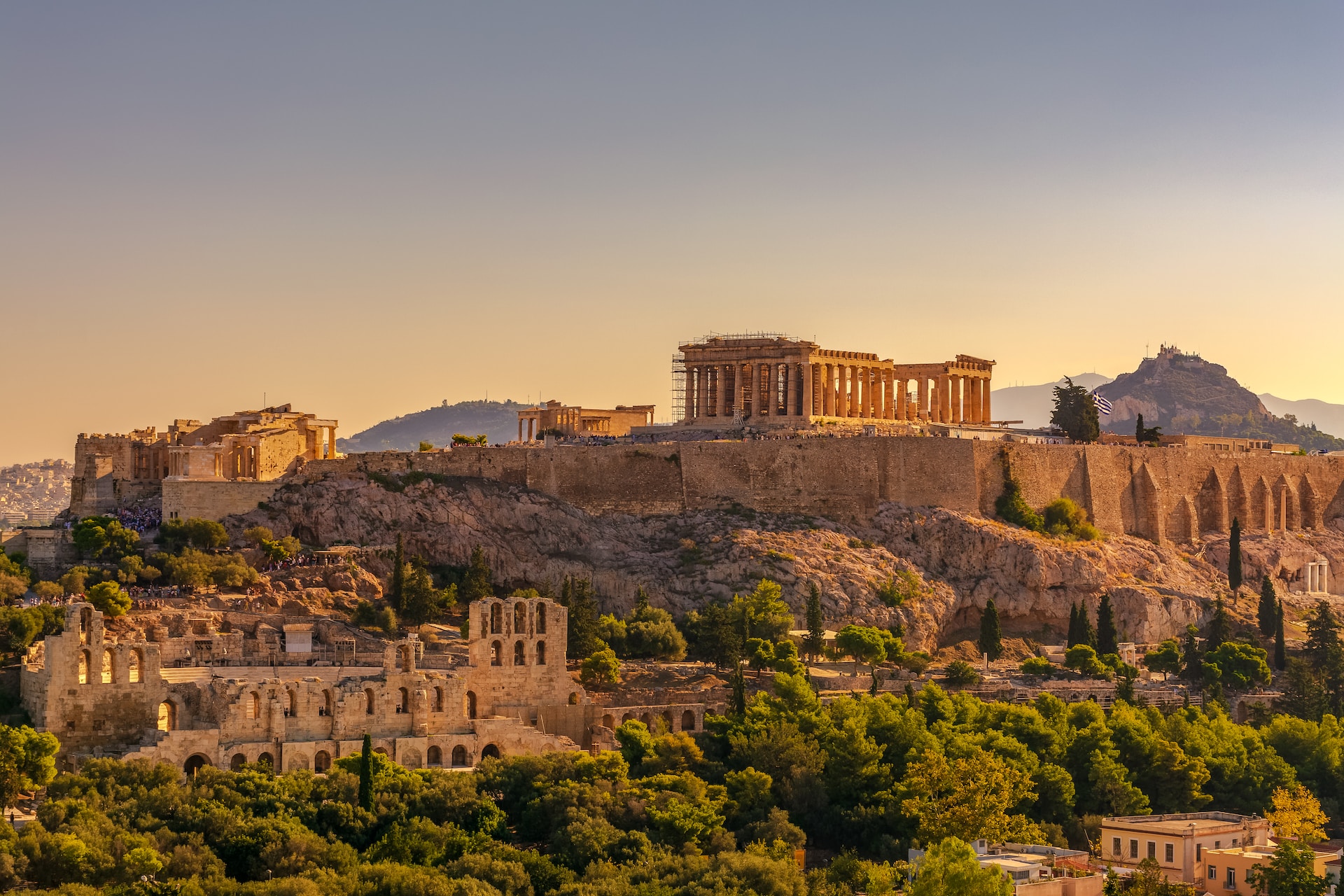
Perched high above Athens, Greece, the Acropolis stands as a symbol of ancient Greek civilization and its enduring legacy. Dominated by the Parthenon, a temple dedicated to the goddess Athena, the Acropolis is an architectural marvel that embodies the ideals of Classical Greece. Built in the 5th century BCE, it showcases Doric and Ionic architectural styles, breath-taking sculptures, and intricate friezes that narrate mythological stories. The Acropolis served as a sacred sanctuary, a political center, and a testament to Athenian democracy, influencing Western art, philosophy, and architecture for centuries to come.
In modern-day Athens, the Acropolis is also home to the Acropolis Museum, which houses a vast collection of antiquities and objects unearthed from the Acropolis – including The Persian Horseman, an almost to-scale statue of a horse being ridden by a man dressed in Middle-Eastern style clothing.
Overlooking Athens from its position on the summit of Areopagus Hill, the Acropolis is visible from almost everywhere in the city. This is in part because there is a law in Athens that states no buildings are allowed to exceed 12 storeys, so as not to impede views of the Acropolis and the Parthenon.
A visit to this ancient wonder with Insight is one of the most incredible history experiences, one that brings the stories of this extraordinary ancient site to life.
Experience it for yourself: Treasures of Greece and the islands
We think you’ll also like: Welcome to Athens, recently voted Europe’s best cultural destination


